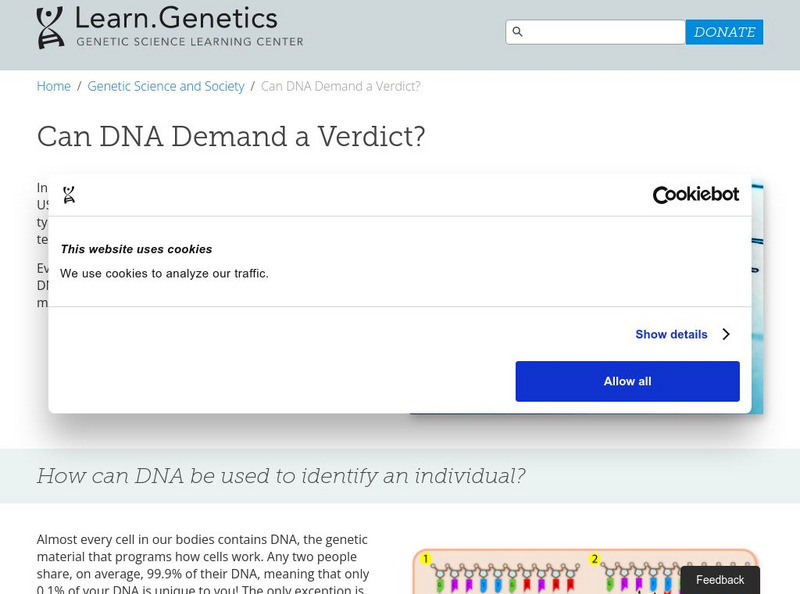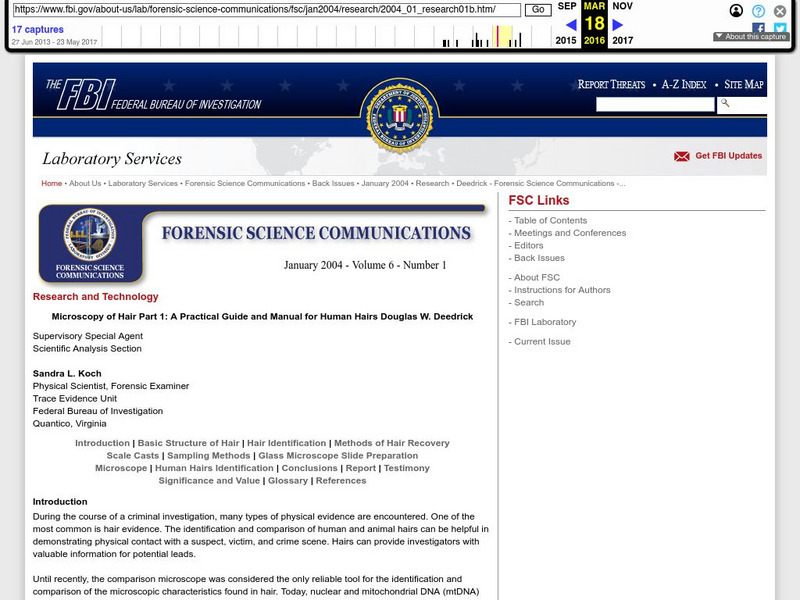Georgia Department of Education
Ga Virtual Learning: Forensic Serology
In what ways does serological evidence help solve a crime? This comprehensive learning tutorial explores what information can be determined from a drop of blood and how blood typing is done. Learn what information we get from blood stain...
University of Utah
University of Utah: Genetic Science Learning Center: Dna and Verdicts
Part of a site on genetics, this page explores DNA as a forensic science. Explains how and why DNA can be used to convict or acquit a criminal from wrongdoing using forensic DNA analysis. Teacher resources too.
Other
Teachers First: Lessons: Who Did It? Forensics to Hone Science and Lab Skills
Comprehensive twenty-lesson unit, complete with a WebQuest and assessment materials, designed to introduce forensic science to students in grades 6, 7, and 8.
Federal Bureau of Investigation
Federal Bureau of Investigation: Practical Guide for Human Hairs
The FBI gives a detailed analysis of the human hair including how to use it as forensic evidence. Topics covered are hair structure, identification, and methods of hair recovery. Labeled diagrams and electron photomicrographs enhance the...
Science Education Resource Center at Carleton College
Serc: Chromatography: Who Wrote the Note?
Students investigate who stole the class pet by testing the chromatograph of different markers as a way to find the evidence that points to the perpetrator.




